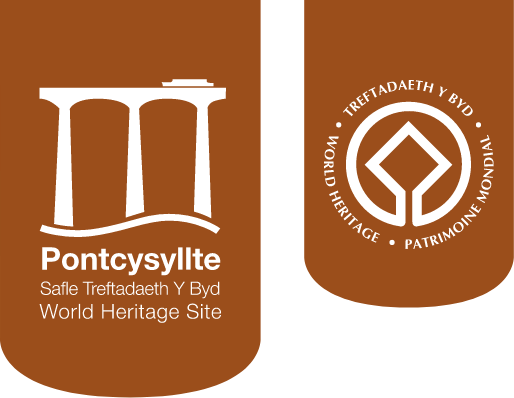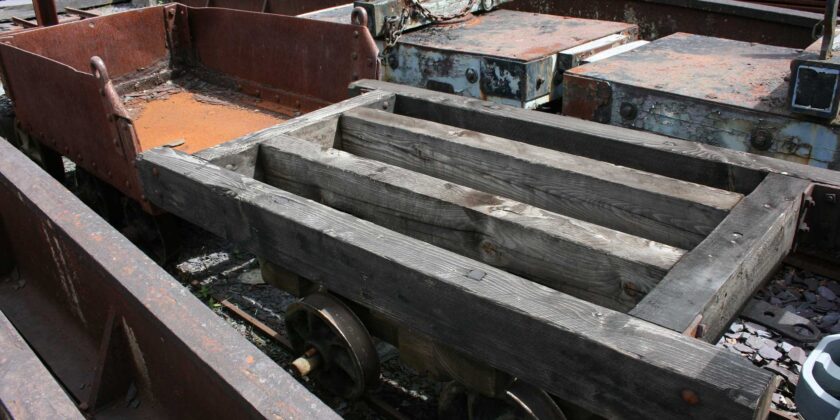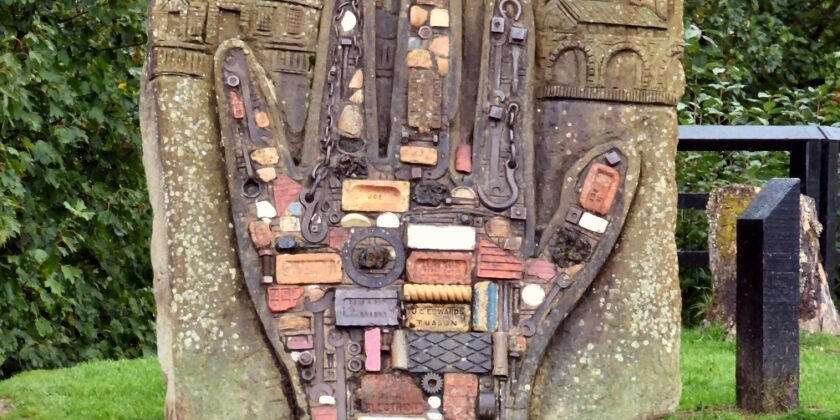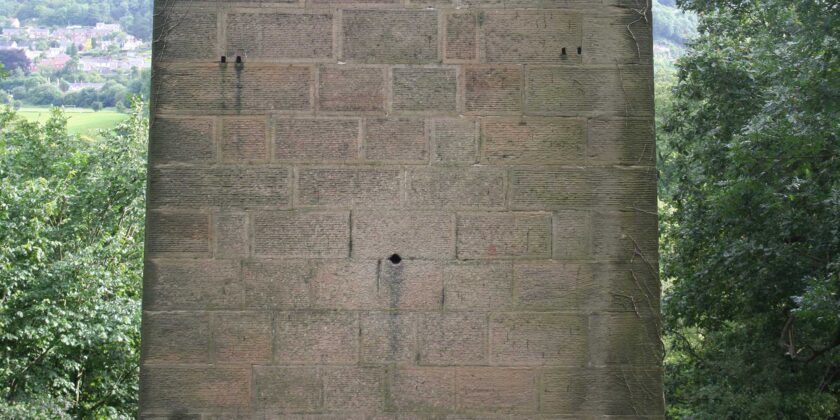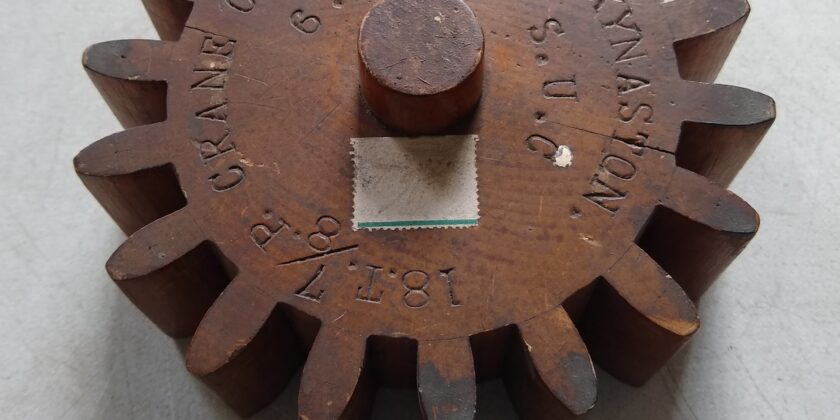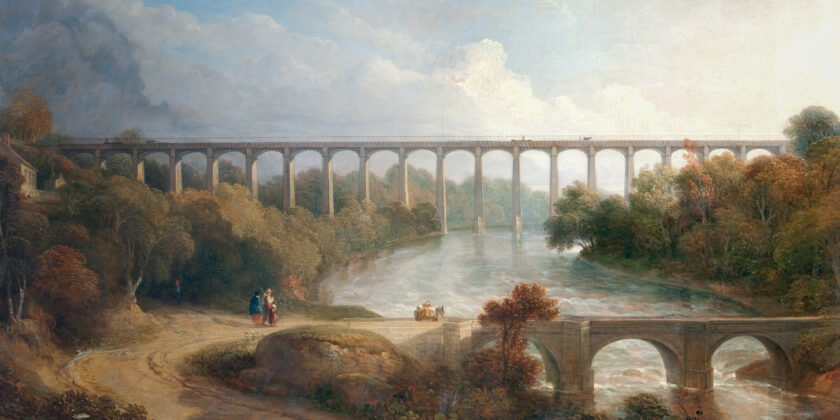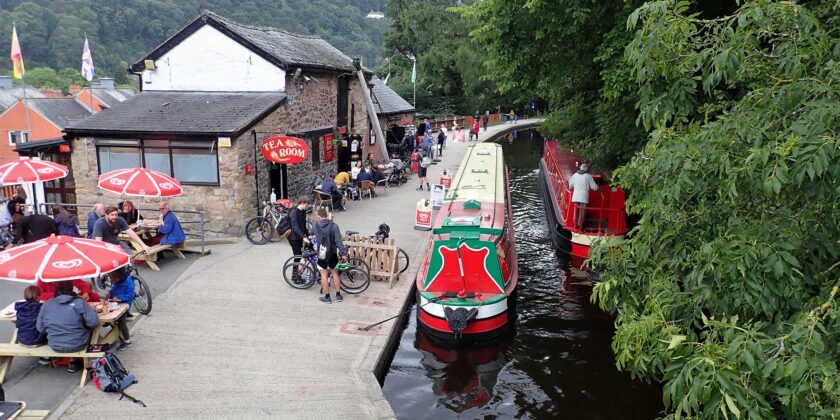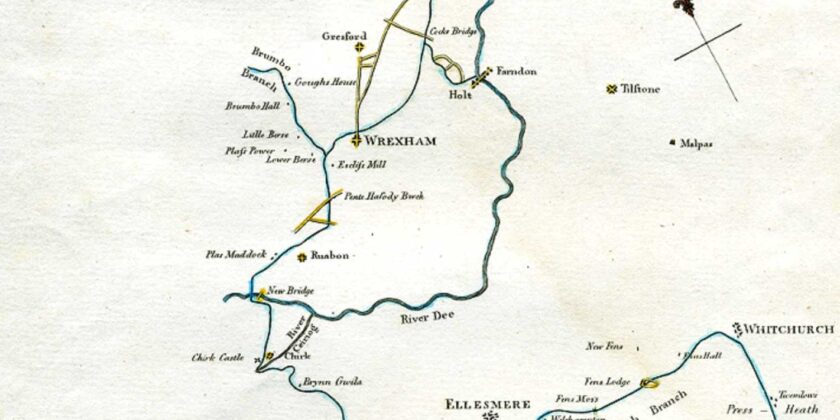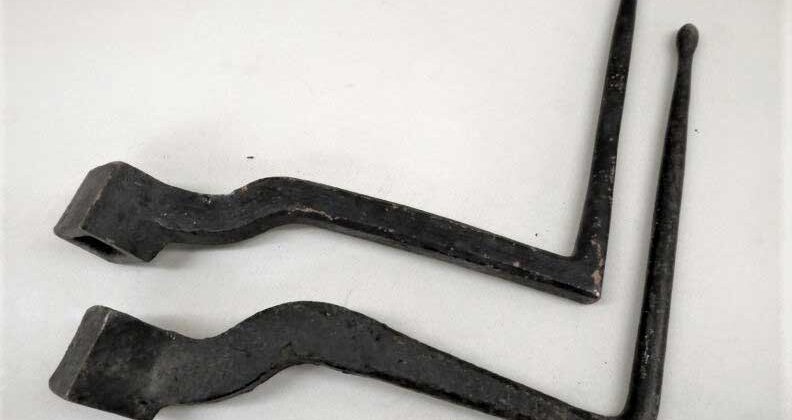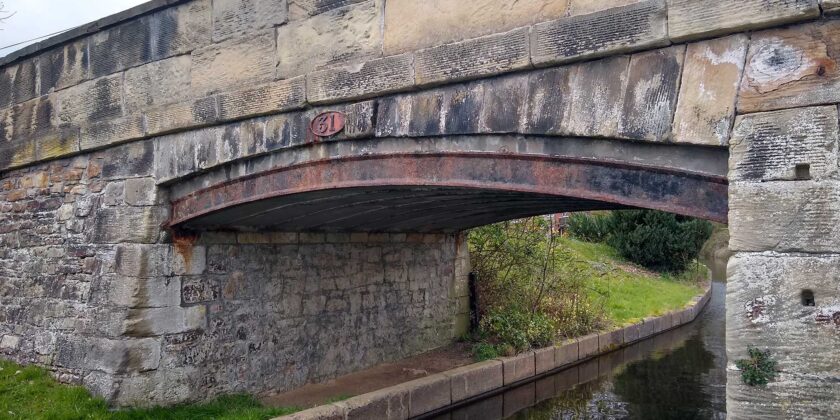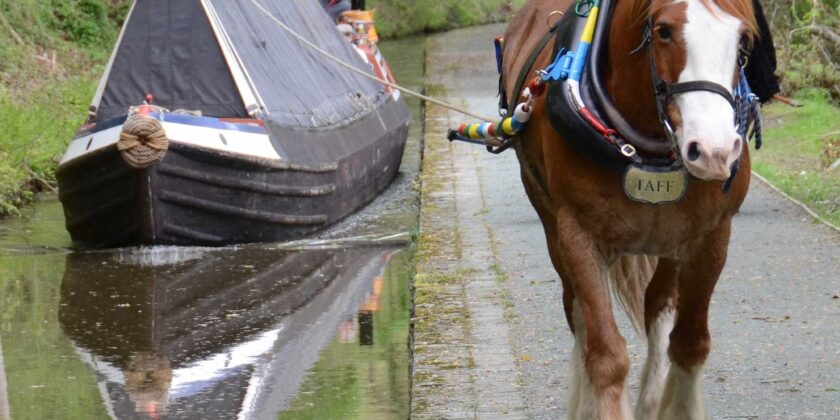Connecting the quarries to the world. Tramroad wagon from Moel Faen quarry.
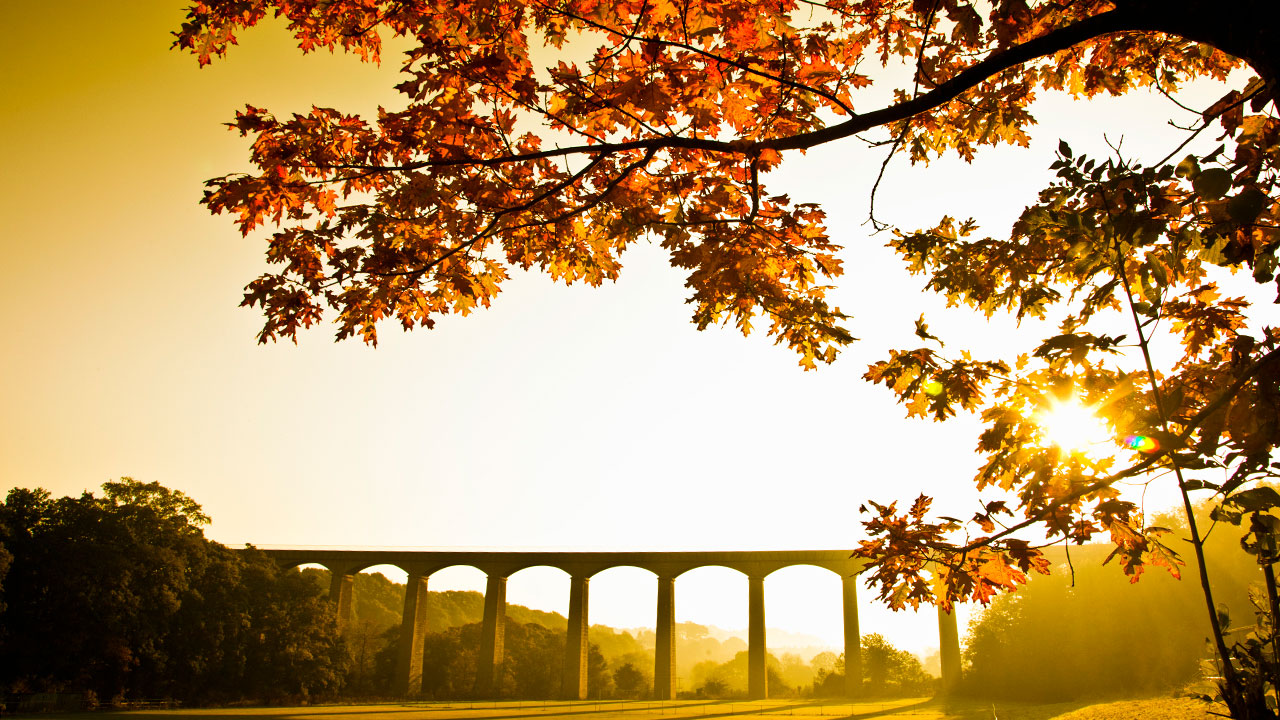
Archives: Objects
Add object information
Sculpture
Artworks to explore along the canal. A large hand can be seen at the head of the aqueduct towpath, standing two metres tall. It is carved from limestone by Anthony Lysycia. The hand represents the many labourers who worked to build the aqueduct, and the rest of the canal, without modern machinery to help them.
Sandstone
Local stone supporting the stream in the sky. The tallest sandstone piers supporting the iron trough of Pontcysyllte aqueduct over the river Dee are over 38 metres (126 feet) high.
Patterns
Historic templates to keep the canal in working order. This pattern tells us about a disappeared part of the canal’s history. It is the only surviving evidence of a crane which operated on the Plas Kynaston branch canal. The Oil Works were part of the Graesser chemical works but in 1896 the crane was owned and maintained by the Shropshire Union Canal Company.
Paintings
Capturing the beauty of the canal on canvas. This 1826 oil painting by George Arnald shows Pontcysyllte Aqueduct as it is most often depicted. It looks east, across the old Pont Cysylltau bridge over the River Dee. The landscape beyond the aqueduct is muted, to emphasise the structure, which is lit up by the low evening sun.
Tourism
Taking in the views, on and around the canal.
Surveying
Plotting and building a route through the landscape.
Windlass
The simple key to life on the canal. The windlass is a simple but essential tool for boat owners and maintenance staff on the canal. It is an L-shaped metal bar, with a socket at one end. The socket fits onto a spindle of a sluice or lock gate. The windlass can then wind it open or closed.
Iron
Telford used cast iron that had been made near the canal for the aqueducts at Chirk and Pontcysyllte, in bridges over the canal, like Rhos-y-Coed bridge at Trevor, and in structures throughout Britain.
Horses
The driving power on the towpath.
